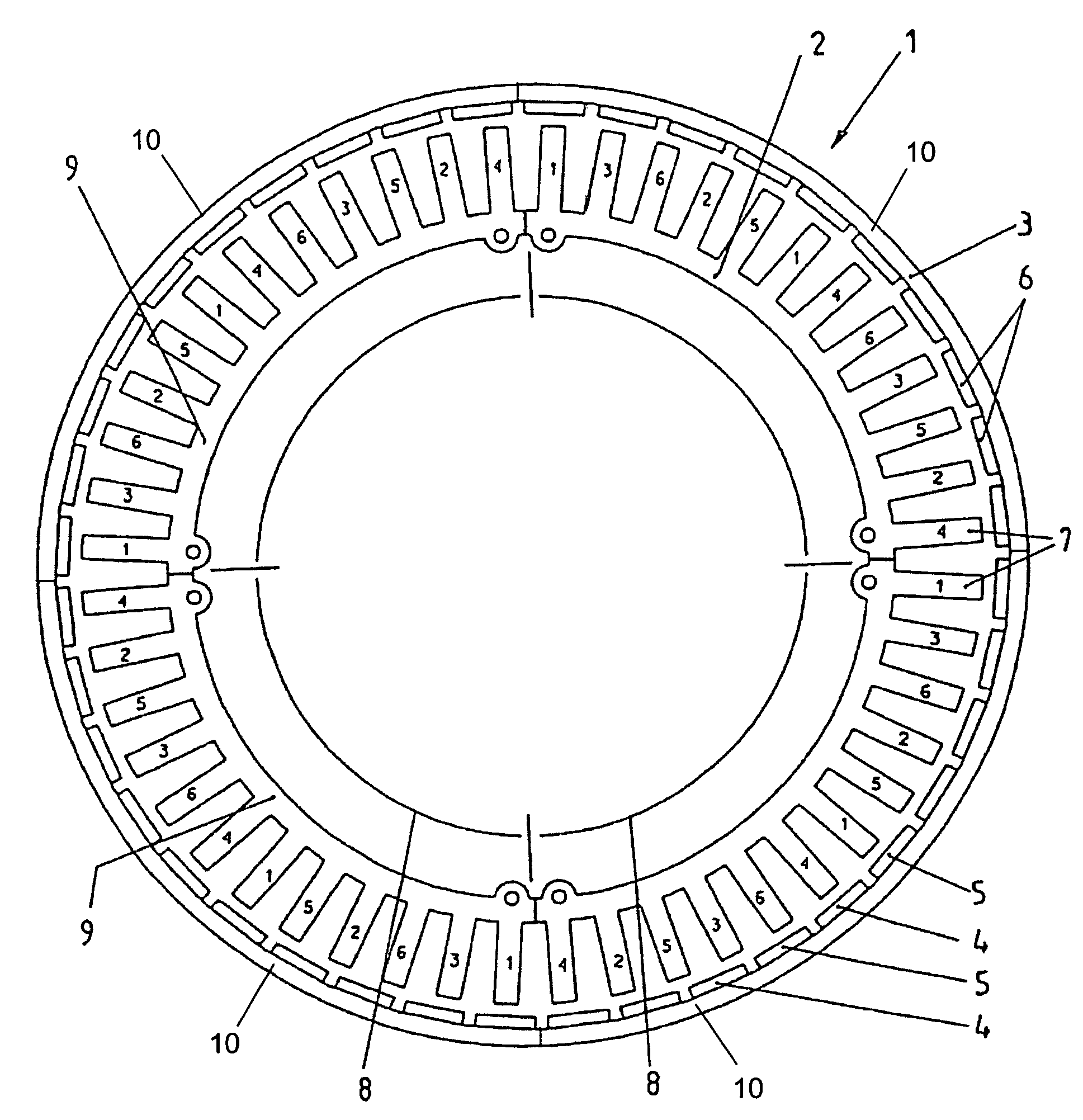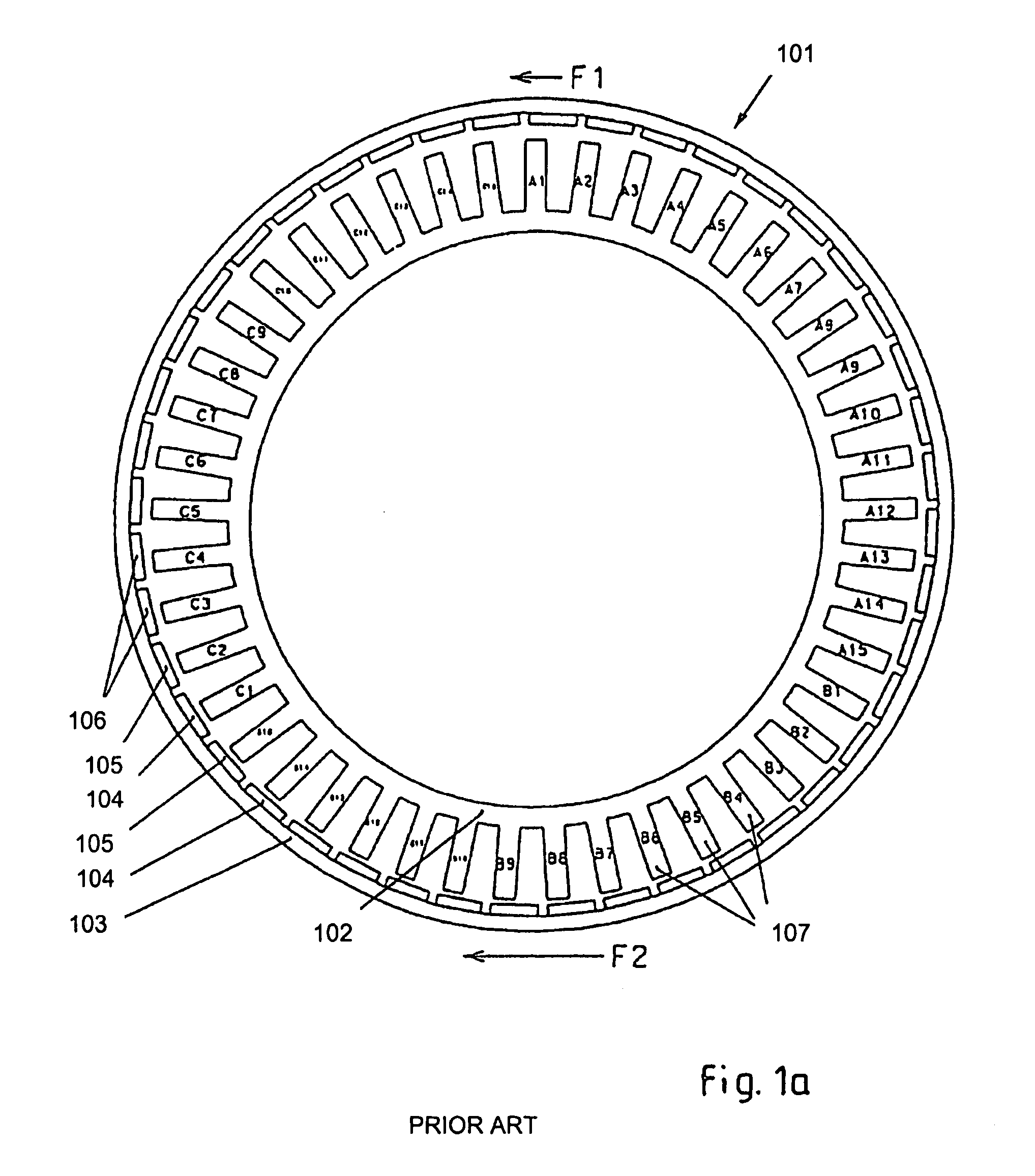Multi pole electrical machine with reduced cogging force
a technology of cogging force and electrical machine, which is applied in the direction of synchronous machines with stationary armatures, windings, windings, etc., can solve the problems of uneven running, unfavorable cogging force generation, and the necessity of adhering to minimum speed, so as to achieve good efficiency of the new electrical machine
- Summary
- Abstract
- Description
- Claims
- Application Information
AI Technical Summary
Benefits of technology
Problems solved by technology
Method used
Image
Examples
Embodiment Construction
[0036]FIGS. 1a and 1b illustrate a state of the art electrical machine 101 which is constructed as a rotary machine. The electrical machine 101 has an internal stator 102 and an external armature 103 which surrounds the stator 102 and which can also be called rotor in this case of a rotary machine. Armature 103 is permanently excited by means of permanent magnets 106. In this present case, armature 103 has an armature pole arrangement, in which magnetic south poles 104 and magnetic north poles 105 alternate and in which each time one south pole 104 and one north pole 105 form one armature pole pair 104, 105 corresponding to an entire magnetic period. Stator 102 of electrical machine 101 is designed for a three-phase electrical machine in a three-phase network with the phases U, V and W. The stator poles 107 are marked accordingly in the same way as in EP 0 291 219 A1, which is incorporated by references here. That means the stator poles 107 designated A1, A3, A5 etc. correspond to c...
PUM
 Login to View More
Login to View More Abstract
Description
Claims
Application Information
 Login to View More
Login to View More - R&D
- Intellectual Property
- Life Sciences
- Materials
- Tech Scout
- Unparalleled Data Quality
- Higher Quality Content
- 60% Fewer Hallucinations
Browse by: Latest US Patents, China's latest patents, Technical Efficacy Thesaurus, Application Domain, Technology Topic, Popular Technical Reports.
© 2025 PatSnap. All rights reserved.Legal|Privacy policy|Modern Slavery Act Transparency Statement|Sitemap|About US| Contact US: help@patsnap.com



